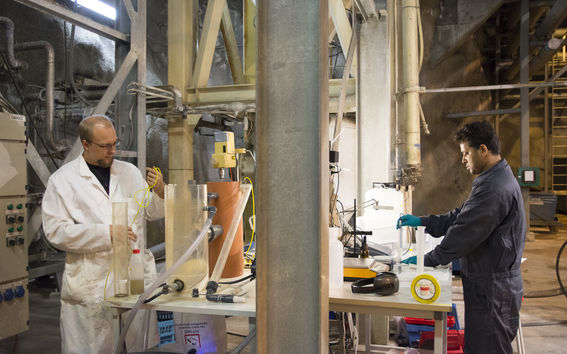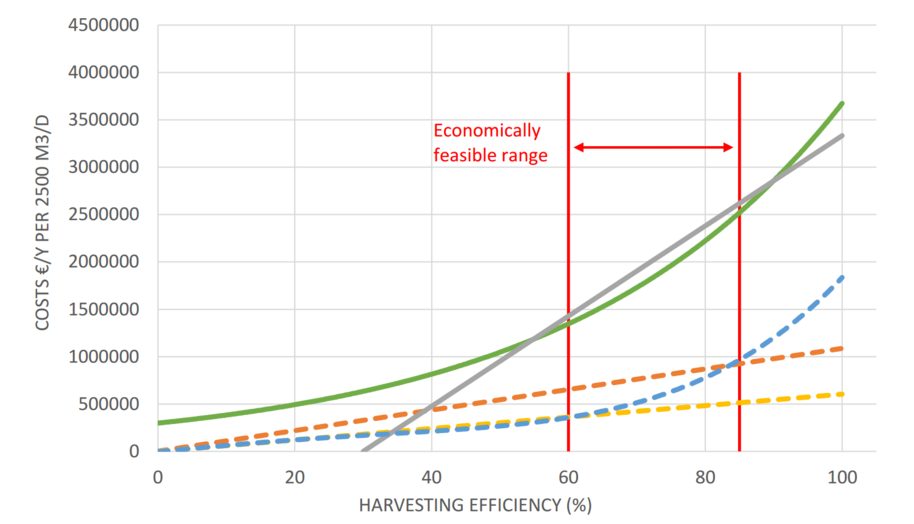Economic feasibility

A rough estimate of the economic viability was prepared. It is the comparison between traditional process costs and NPHarvest process costs. The grey line represents the traditional treatment costs. The curve starts at 30 % because 30 % removal was estimated to be the extent of nitrogen removal at the process that could be achieved without any increased cost related specifically to nitrogen removal.
The dashed lines are sub costs for NPHarvest: investment, calcium hydroxide cost and sulphuric acid cost, respectively. Investment costs include all the equipment and infrastructure costs and increases in exponential manner because several reactors in series would be needed to reach higher harvesting efficiency. Chemical costs increase linearly. The green line is the sum of the three dashed lines.
Assumptions:
- WWTP which produces 2500 m3 reject water a day, one million inhabitants
- Reject water is recycled back to the normal treatment process, contributing around 20 % of the nitrogen load on it.
- Conventional treatment costs are linear
- Costs for NPHarvest are estimated as yearly costs (equipment) using 15-year lifetime and an interest rate of 5% and operational costs including chemical costs
- No energy costs were included
As seen in the picture, the costs for NPHarvest are lower than the costs for the conventional treatment process when the harvesting efficiency is between 60 % and 80 %.
